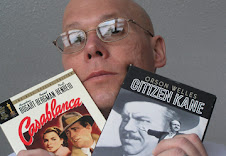


Elia Kazan’s films ahead of their time
BOTTOM: NATALIE WOOD and Warren Beatty in “Splendor in the Grass.”
CENTER: JACK PALANCE in “Panic in the Streets.”
TOP: JEANNE CRAIN plays African-American “Pinky.”
I always liked director Elia Kazan’s movies.
A few years ago I found myself engrossed in “A Face in the Crowd,” in which a not-so-nice, narcissistic Andy Griffith plays a musician who is nothing like his alter-ego on “The Andy Griffith Show.”
I must have ordered a bunch of Kazan films on Netflix back when and have been enjoying film after film after film as they appear in my mailbox.
The first of the Kazan films was “Panic in the Streets” from 1950. Richard Widmark is a low-paid military doctor who must find people infected with the pneumonic plague.
While he is out trying to save the world from a major catastrophe, his wife, played by the under used Barbara Bel Geddes, is trying to negotiate with their grocer because she doesn’t have the money to pay the bill.
The story begins with Jack Palance, as vicious hoodlum Blackie, who kills an illegal immigrant who made too much money playing cards.
When authorities examine the body, they find it filled with the plague and the race is on.
Given the times, it looks like Kazan is using the plague as symbolism, equating the plague with the communist scare.
Kazan was excellent at bringing important issues into the plots of his films.
A year before, Kazan directed “Pinky,” starring Jeanne Crain as Pinky Johnson, who returns to her backwater town with a nursing degree and a professional demeanor. What we don’t realize initially is Pinky is African-American and by not mentioning the subject, passes herself off as white.
Her granny, played in real mammy style by the great Ethel Waters, says it’s a crime against God to not mention she is black or well, “colored.”
Now what is amazing about this film is it tackles the question of racism head-on, even though it was filmed in 1949 when discrimination was still well established.
You have to wonder how “Pinky” made out in the deeply-segregated South of 1949.
Pinky gets jolted into remembering she is a woman of color when she is nearly raped by two men who try to track her down and grab her in their car. After all, raping a black woman was OK.
In another scene, a white woman puts up a fuss and demands satisfaction from a store manager when a clerk asks the woman to wait a second until she rings up a sale for Pinky. White women do not wait for blacks, even if their skin is almost the same color.
After the near rape, Pinky decides to leave, but agrees to stay to nurse a dying Miss Em, the stern old lady who helped granny out and lives in the big house. She is played wonderfully by the great Ethel Barrymore.
The film tackles racism at a time when racism was perfectly acceptable and legal.
The third film was “Splendor in the Grass,” a rich, beautiful-looking film starring Natalie Wood and Warren Beatty.
The film tackles raging teen hormones and societal norms. It takes place in the South in the late 1920s. Boys will be boys and handle their teen desires with a certain kind of girl. Yet another type of girl was used for marrying purposes.
Beatty, as Bud, came from a rich family headed by loud, obnoxious Pat Hingle. Bud is head-over-heels in love with the lovely Natalie character and doesn’t really want an alternate girl.
Hingle pushes the idea of finding a less moral extra girlfriend, not realizing his own daughter is fulfilling the same role, sometimes with married men.
Teen sex kicks in to high gear as Wood finds herself consumed with love or, um, the like and ends up in a mental hospital, after his father cashes in bonds to pay for it. (The bonds wouldn’t have been worth much soon anyway, as October 1929 approached.)
While Wood struggles in the mental hospital, Beatty blows his chances at success at Yale. He would rather run the family ranch.
It is a compelling film of almost epic proportions, shot in beautiful Technicolor. Again, Kazan tackles issues you rarely saw discussed in motion pictures at the time.
Kazan definitely didn’t dodge controversy during his years of directing. You would be amazed at how contemporary his work plays today. His last film was “The Last Tycoon,” which came out in 1976. He died in 2003.
You might know him by other pictures, including “On the Waterfront,” “A Streetcar Named Desire” and “East of Eden.”
He’s well worth revisiting.



